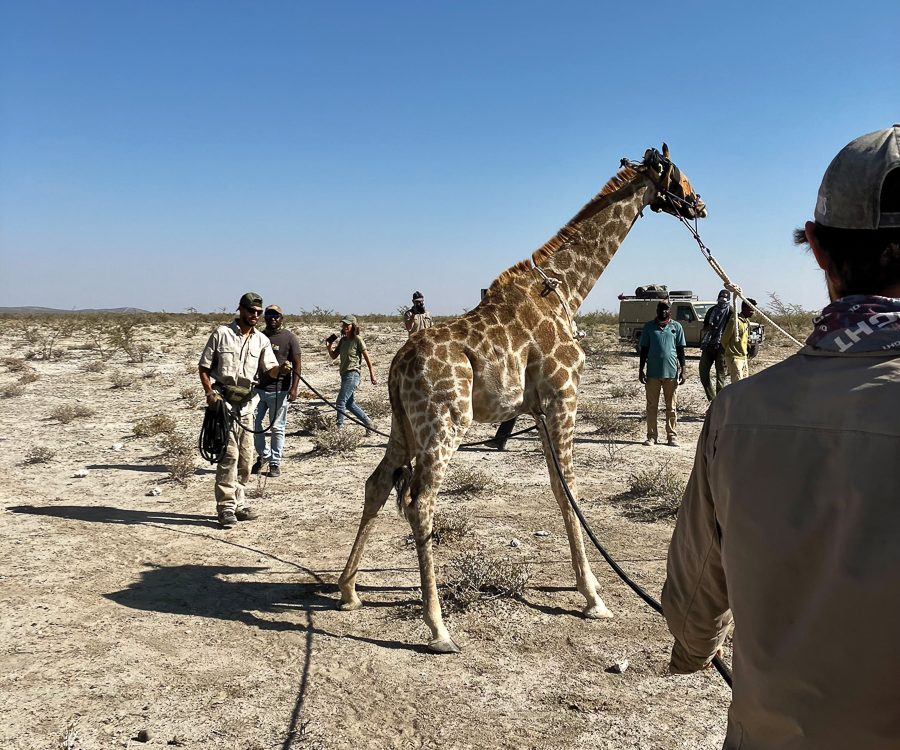Events | July 2015
June 26, 2015Strand Hotel: The legacy continues
June 30, 2015INTO THE OKAVANGO
Text Steve Boyes | Photos Corry Richards
We launched the expedition on the 22nd May after driving for two weeks to one of the remotest places in Africa, the source of the Rio Cuito. Our convoy included an armored 6×6 Kamaz truck and three armored Land Rovers from the HALO Trust, and our three Land Cruisers. Seven vehicles on an impossible, never-before-done drive, through hundreds of kilometres of miombo woodland and several minefields. HALO, a humanitarian de-mining NGO, had set a reconnaissance team out in mid-May to prove that the track through the ores was safe. At sunset on the 21st the “source lake” was revealed to us. We had found the source and would launch the expedition the next day… or so we thought. We poled our mokoros down the length of the lake to discover that the river was too small to navigate… We spent the next 8 days towing fully-loaded mokoros next to the river down steep valleys, trudging through the march sedges and grasses adjacent to this small river fed by seepage from the forest catchment and wetlands above the river. By the 1st of June we were on the water, cutting and scratching our way past trees and makeshift bridges blocking the narrow, fast-flowing river. Sting-less bees, heat, rapids and physical hardship. It took a lot for us to push forward each day in the hope that we would eventually find the “big river” we are on now, travelling up to 45km per day and progressing steadily to Cuito Cuanavale our first resupply and rest point on this epic, 3-month expedition. The growing river has now prepared us for what lies ahead. We are ready to pole ourselves to the Makgadigadi Pans by mid-August.
The Okavango Wilderness Project, “Projecto Okavango Wilderness”, has been whole-heartedly accepted by Angola, Namibia and Botswana. We have been endorsed by the President of Angola and met with two Governors and the Minister of Environment. The project has been on the national news broadcaster here in Angola several times and was on the front page of the national newspaper yesterday. On the 17th June we flew out from the expedition for a signing ceremony with the Minister in Cuito Cuanavale and a 2-hour seminar sharing our research findings so far. This day was a huge success with solid commitments from the Angolan government to support and fund the project for the next few years. We have discovered many possible new species of fish, aquatic insects, and plants. We even have samples from an unknown duiker species that appears to be new to science. All the way up here in this forgotten, inaccessible landscape we have confirmed the presence of lions, leopard, hyena, wild dog, bush pig, warthog, sitatunga, oribi, reedbuck, lechwe, hippo, crocodile and much else. The highest records of wattled crane, crocodile, tiger fish, and hippo in the river system. We also discover an unknown, unnamed waterfall in the upper catchment. This place is a hidden treasure and needs to be protected to guarantee the future of the Okavango Delta. The fate of the Okavango River Basin lies with the Angolan government right now and I am confident that they will protect it from unnecessary development and any further degradation. Botswana and Namibia needs to support tourism development in the Angolan catchment and Angola need to open up their borders with tourist visas upon arrival.
There are hunters throughout this landscape, burning down the entire river course to flush animals in front of their shotguns, which we hear everyday. We have met with the local chief and talk to all the hunters we encounter. None have ever seen or met people from the outside. Never. They have no links to government and all have been excited to meet us. These people, the fisherman, cassava farmers and hunters, are destroying this river catchment with this burning and hunting for profits at the markets in Tempue, the closest town. They burn each year from June to October because they feel it is their duty. Everyone in the village is told to burn as much as possible, so everyday the fires start up around us, ever-present. The Angolan government wants to work with us in establishing new protected areas and forest reserves up here. We are the first scientists to witness this problem and advise on a way forward. I have been made an advisor to the Minister in the hope that we can sort this problem out quickly and to the benefit of the local people that have lived without any contact with the outside world for living memory. It has been a privilege to meet these people of the river and introduce them to the five baYeyi polers with us on this National Geographic expedition.
National Geographic are making a feature documentary film and magazine article, as well as a book based on the Okavango Wilderness Project. Already the imagery is spectacular and an epic story is emerging. Learning and discovery down the length of a little-known river that has never been navigated from “source to sand” – from the source lake to the pans. We look forward to spending time with our project partners in Botswana and Namibia. The progress we have made so far is incredibly encouraging and this momentum needs to be maintained if we are to deliver on a conservation plan that protects these fragile landscapes in perpetuity. Please follow our progress in real-time at intotheokavango.org, #okavango15 and @intotheokavango. Come explore with us!

